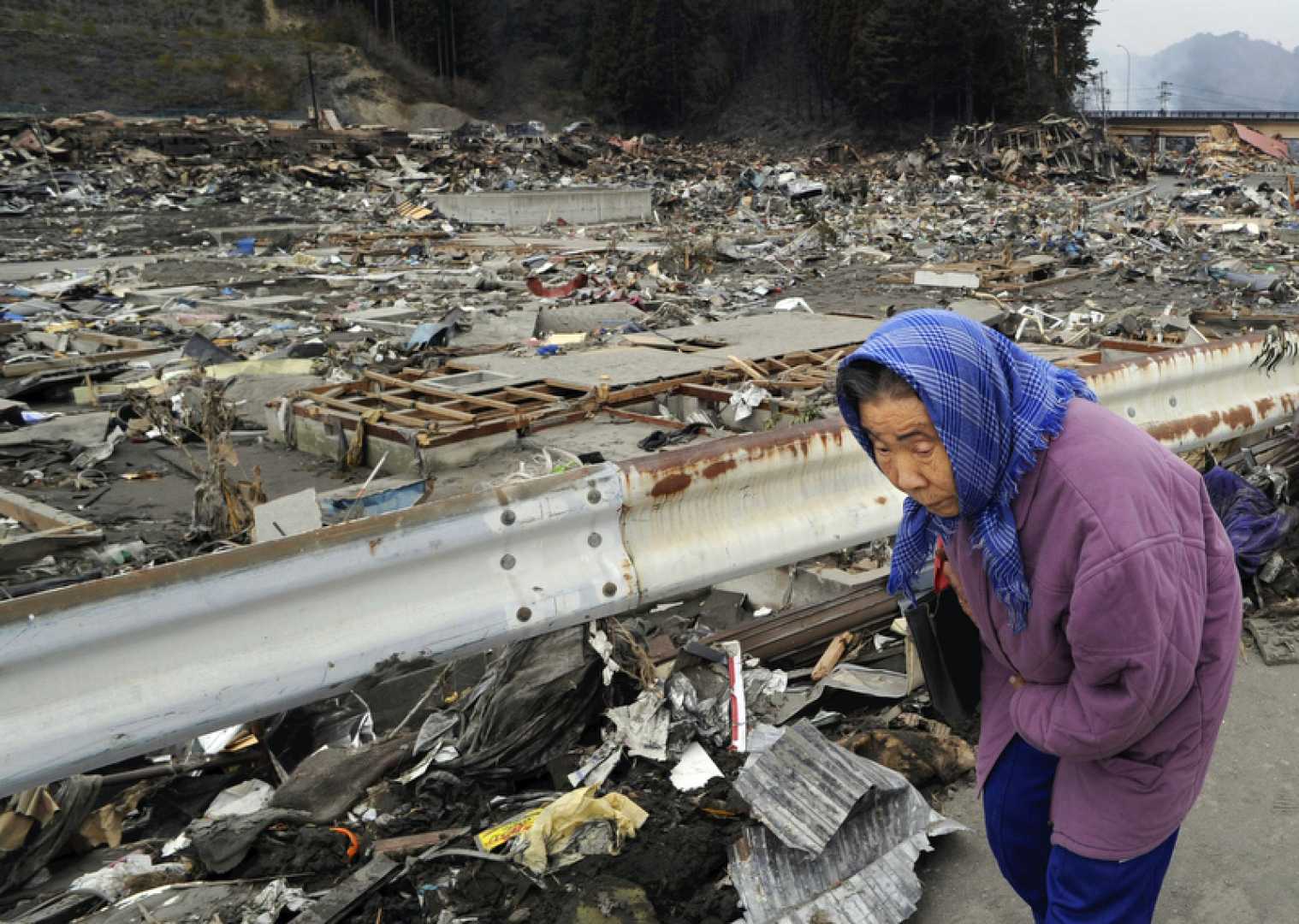World
Survivors Share Memories of 2011 Tsunami’s Devastation in Otsuchi

OTSUCHI, Iwate Prefecture—On March 11, 2011, a massive tsunami surged over a 6.4-meter seawall, devastating the town of Otsuchi and claiming numerous lives. The harrowing scene was captured in a striking photograph taken by Miyoko Sasaki, who was positioned on high ground during the disaster.
Sasaki, now 64, took the photo from a hill near her home in the Ando district while her husband, Keiichi, 63, was working approximately 10 kilometers away at a steel plant in Kamaishi. Following the tsunami’s destruction of coal conveyor belts and flooding of underground pits, Keiichi, who managed to escape, rushed back home to Otsuchi, where he was eventually reunited with Miyoko and their third daughter, Ikumi, 28, at a local evacuation center.
The couple had been separated following the disaster, with Keiichi initially believing that Miyoko and their daughter might be safe at home. “Maybe the house is just flooded up to the floorboards,” he thought. However, upon reaching Daitokuin Temple, where many evacuated residents gathered, he confronted the extensive devastation that had occurred.
Three weeks after the disaster, Miyoko shared her photograph with Keiichi, stating, “I actually took this.” The photo powerfully depicted the moment the tsunami overtook the seawall. “I was standing on high ground, unable to do anything, while people were being swept away,” Miyoko recalled, expressing her guilt over capturing such a tragic moment. “I felt guilty for taking that picture.”
Even as they sought to care for others in the immediate aftermath, the couple found it difficult to discuss the tsunami. Mentioning “that day” became a taboo in their family, and discussions often turned silent. Determined to honor the lives lost, Keiichi now advocates for disaster preparedness in their community.
In response to the tragedy, Keiichi had previously urged local officials to create a wheelchair-accessible evacuation route near Daitokuin Temple—a plan that was halted due to budget constraints. “There were lives that could have been saved that day,” he reflected, noting that over 10 percent of their district’s residents perished in the disaster.
As the years pass, the Sasaki family and their town grapple with the responsibility of preserving memories from the disaster. They believe it is crucial to educate younger generations, especially as junior high school students now born after the tsunami struggle to comprehend its impact. To maintain awareness, Ando’s town association conducts annual evacuation drills involving community members and high school students.
One distinctive initiative includes the construction of a wooden monument every four years to memorialize the disaster. Local high school students collaborate with residents to determine its inscription, fostering intergenerational dialogue and understanding of the event’s significance.
This March, to strengthen disaster preparedness, local students will visit Noto, Ishikawa Prefecture, to study the Noto Peninsula earthquake that occurred on January 1, 2024. Reflecting on his commitment to the community, Keiichi, who became a town assembly member following the tragedy, remains firm in his belief: “We must not let people die.” His dedication continues to drive ongoing efforts for disaster readiness.












